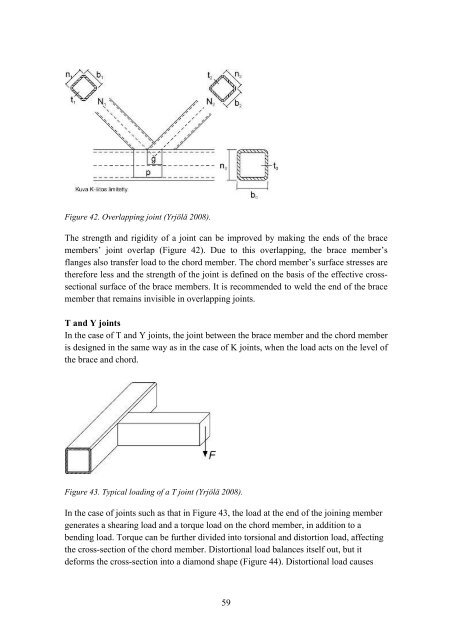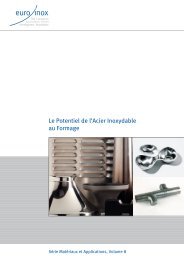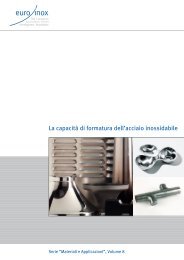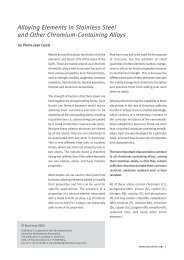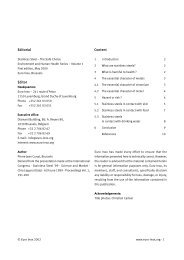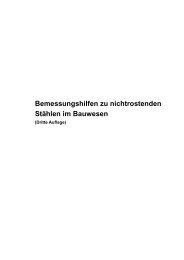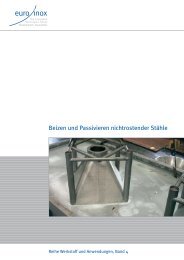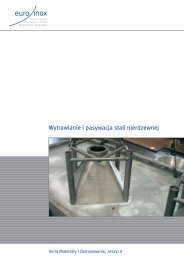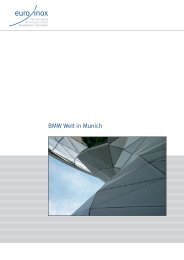Innovative Stainless Steel Applications in transport ... - Euro Inox
Innovative Stainless Steel Applications in transport ... - Euro Inox
Innovative Stainless Steel Applications in transport ... - Euro Inox
Create successful ePaper yourself
Turn your PDF publications into a flip-book with our unique Google optimized e-Paper software.
Figure 42. Overlapp<strong>in</strong>g jo<strong>in</strong>t (Yrjölä 2008).<br />
The strength and rigidity of a jo<strong>in</strong>t can be improved by mak<strong>in</strong>g the ends of the brace<br />
members’ jo<strong>in</strong>t overlap (Figure 42). Due to this overlapp<strong>in</strong>g, the brace member’s<br />
flanges also transfer load to the chord member. The chord member’s surface stresses are<br />
therefore less and the strength of the jo<strong>in</strong>t is def<strong>in</strong>ed on the basis of the effective crosssectional<br />
surface of the brace members. It is recommended to weld the end of the brace<br />
member that rema<strong>in</strong>s <strong>in</strong>visible <strong>in</strong> overlapp<strong>in</strong>g jo<strong>in</strong>ts.<br />
T and Y jo<strong>in</strong>ts<br />
In the case of T and Y jo<strong>in</strong>ts, the jo<strong>in</strong>t between the brace member and the chord member<br />
is designed <strong>in</strong> the same way as <strong>in</strong> the case of K jo<strong>in</strong>ts, when the load acts on the level of<br />
the brace and chord.<br />
Figure 43. Typical load<strong>in</strong>g of a T jo<strong>in</strong>t (Yrjölä 2008).<br />
In the case of jo<strong>in</strong>ts such as that <strong>in</strong> Figure 43, the load at the end of the jo<strong>in</strong><strong>in</strong>g member<br />
generates a shear<strong>in</strong>g load and a torque load on the chord member, <strong>in</strong> addition to a<br />
bend<strong>in</strong>g load. Torque can be further divided <strong>in</strong>to torsional and distortion load, affect<strong>in</strong>g<br />
the cross-section of the chord member. Distortional load balances itself out, but it<br />
deforms the cross-section <strong>in</strong>to a diamond shape (Figure 44). Distortional load causes<br />
59


